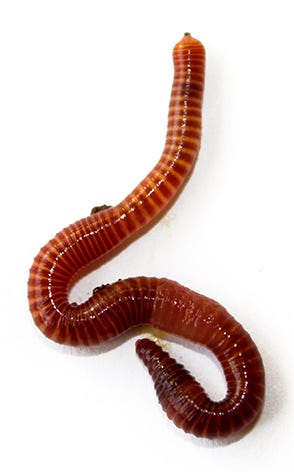Thriving red wigglers: Their role in reducing waste
Thriving red wigglers: Their role in reducing waste
Blog Article
Red Wigglers: Your Eco-Friendly Remedy for a Greener Garden
Red wigglers, or Eisenia fetida, present a sustainable method to boosting garden health with vermicomposting. By incorporating red wigglers right into your horticulture practices, you can efficiently handle waste while supporting a vivid ecosystem.
(Hickory)
What Are Red Wigglers?
Although typically mistaken for normal earthworms, red wigglers (Eisenia fetida) are an unique species understood for their efficiency in composting raw material. These worms thrive in abundant, organic settings, such as compost heap and vermicomposting systems, where they play an important duty in breaking down waste. Unlike their even more usual counterparts, red wigglers favor a warmer habitat, commonly between 55 ° F and 77 ° F, which optimizes their activity and efficiency.
Red wigglers are characterized by their reddish-brown coloration and fractional bodies, which can grow up to 4 inches in length. They have a distinct capacity to eat and absorb organic products at an excellent rate, refining up to half their body weight daily. This fast decomposition process not only enhances the dirt yet additionally adds to the general health of the yard ecosystem.
In terms of recreation, red wigglers are respected, efficient in creating cocoons that have multiple eggs. This permits fast populace development, making them an optimal selection for composting undertakings. Their adaptability and starved hunger for natural waste placement red wigglers as an important ally for ecologically aware garden enthusiasts looking for sustainable practices.
Benefits of Utilizing Red Wigglers
Using red wigglers in the yard supplies countless benefits that enhance both soil quality and plant health. These earthworms are extraordinary decomposers, damaging down raw material such as kitchen area scraps and lawn waste right into nutrient-rich spreadings. These castings, commonly described as "worm gold," supply crucial nutrients that boost dirt fertility, advertising lively plant development.
Red wigglers likewise improve soil structure. Their burrowing activity aerates the dirt, facilitating far better water seepage and origin infiltration. This leads to a healthier root system, which is crucial for nutrient uptake and overall plant vigor. The visibility of red wigglers boosts microbial activity in the soil, developing a prospering environment that contributes to disease resistance and boosted plant health and wellness.
Another substantial benefit of utilizing red wigglers is their ability to minimize waste. In summary, incorporating red wigglers right into gardening methods yields considerable benefits, making them a beneficial addition to any eco-conscious garden.
(Worm Farms Near Me)
Exactly How to Begin Vermicomposting
To begin vermicomposting, it's important to create a suitable setting for red wigglers to grow, as their success straight affects the efficiency of the composting process. Beginning by choosing a container, such as a plastic or wooden container, with ample water drainage and ventilation. A size of approximately 2 square feet is ideal for a house, permitting a workable worm population.
Following, prepare bed linen material that is wet however not overly damp. Shredded paper, cardboard, and coconut coir are outstanding choices, supplying a comfortable habitat while additionally functioning as a carbon source. Load the bin with 4 to 6 inches of bedding.
After developing the bed linen, introduce your red wigglers. A regular starting populace has to do with 1 extra pound of worms, which can take in approximately half an extra pound of food scraps daily. It is vital to include food scraps gradually, concentrating on vegetable peelings, fruit waste, and coffee premises, while avoiding meat, dairy products, and oily foods to avoid smells.
Maintaining a Healthy And Balanced Worm Bin
Once your red wigglers are worked out into their brand-new bed linens, keeping a healthy worm bin ends up being vital to make certain optimal composting conditions. Ideally, the worm bin ought to be kept damp however not soaked; a moisture degree around 60-70% is optimum.
Temperature level visit the website control is just as crucial. Red wigglers prosper in settings between 55 ° F and 77 ° F(13 ° C to 25 ° C) Stay clear of revealing the bin to extreme temperatures; severe warm can kill the worms, while excessive cold can reduce their task.
Aeration is essential to stop anaerobic problems, which can cause unpleasant odors and damage the worms. Transform the bedding delicately every couple of weeks to promote air movement and disperse food evenly.
Feeding your red wigglers is another essential element. Offer a well balanced diet plan of kitchen scraps, staying clear of citrus and spicy foods, which can be damaging to their health. By regularly monitoring these aspects, you can guarantee a thriving environment within your worm bin.

Tips for Making Use Of Worm Castings
On a regular basis incorporating worm spreadings right into your garden can substantially enhance soil health and wellness and plant development. To efficiently make use of worm spreadings, begin by figuring out the ideal application rate, which normally varies from 10-20% of the total soil quantity. This makes certain optimal nutrient accessibility without frustrating your plants.
When using worm castings, mix them into the leading couple of inches of dirt around established plants or integrate them right into your seed-starting mix for brand-new seedlings. This practice promotes root advancement and boosts dampness retention. Additionally, consider producing a worm tea by steeping worm spreadings in water for 24-48 hours. This nutrient-rich fluid can be made use of as a foliar spray or dirt saturate, providing an instant boost to your plants.

Final Thought
The usage of red wigglers in horticulture practices offers a sustainable method to throw away management and dirt enrichment. The assimilation of red wigglers into gardening regimens ultimately supports both eco-friendly equilibrium and agricultural efficiency. red worms.
Report this page